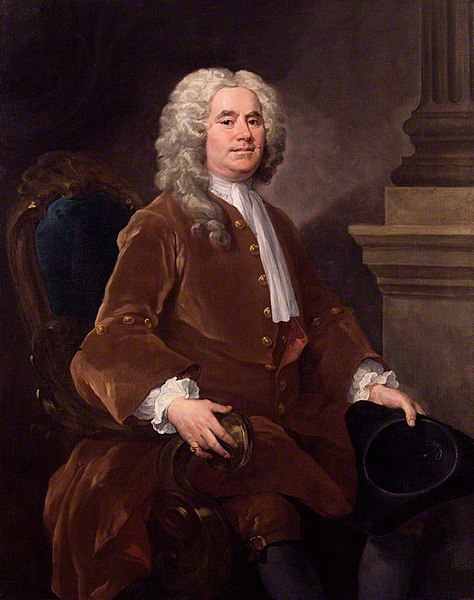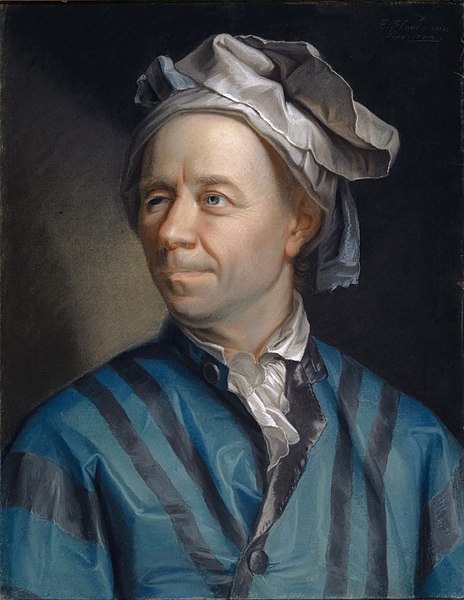William Jones (mathematician)
William Jones, FRS was a Welsh mathematician, most noted for his use of the symbol π to represent the ratio of the circumference of a circle to its diameter. He was a close friend of Sir Isaac Newton and Sir Edmund Halley. In November 1711, he became a Fellow of the Royal Society, and was later its vice-president.
Portrait of William Jones by William Hogarth, 1740 National Portrait Gallery
Jones' usage of π
The number π is a mathematical constant that is the ratio of a circle's circumference to its diameter, approximately equal to 3.14159. The number π appears in many formulae across mathematics and physics. It is an irrational number, meaning that it cannot be expressed exactly as a ratio of two integers, although fractions such as are commonly used to approximate it. Consequently, its decimal representation never ends, nor enters a permanently repeating pattern. It is a transcendental number, meaning that it cannot be a solution of an equation involving only finite sums, products, powers, and integers. The transcendence of π implies that it is impossible to solve the ancient challenge of squaring the circle with a compass and straightedge. The decimal digits of π appear to be randomly distributed, but no proof of this conjecture has been found.
Archimedes developed the polygonal approach to approximating π.
Isaac Newton used infinite series to compute π to 15 digits, later writing "I am ashamed to tell you to how many figures I carried these computations".
The earliest known use of the Greek letter π to represent the ratio of a circle's circumference to its diameter was by Welsh mathematician William Jones in 1706
Leonhard Euler popularized the use of the Greek letter π in works he published in 1736 and 1748.






